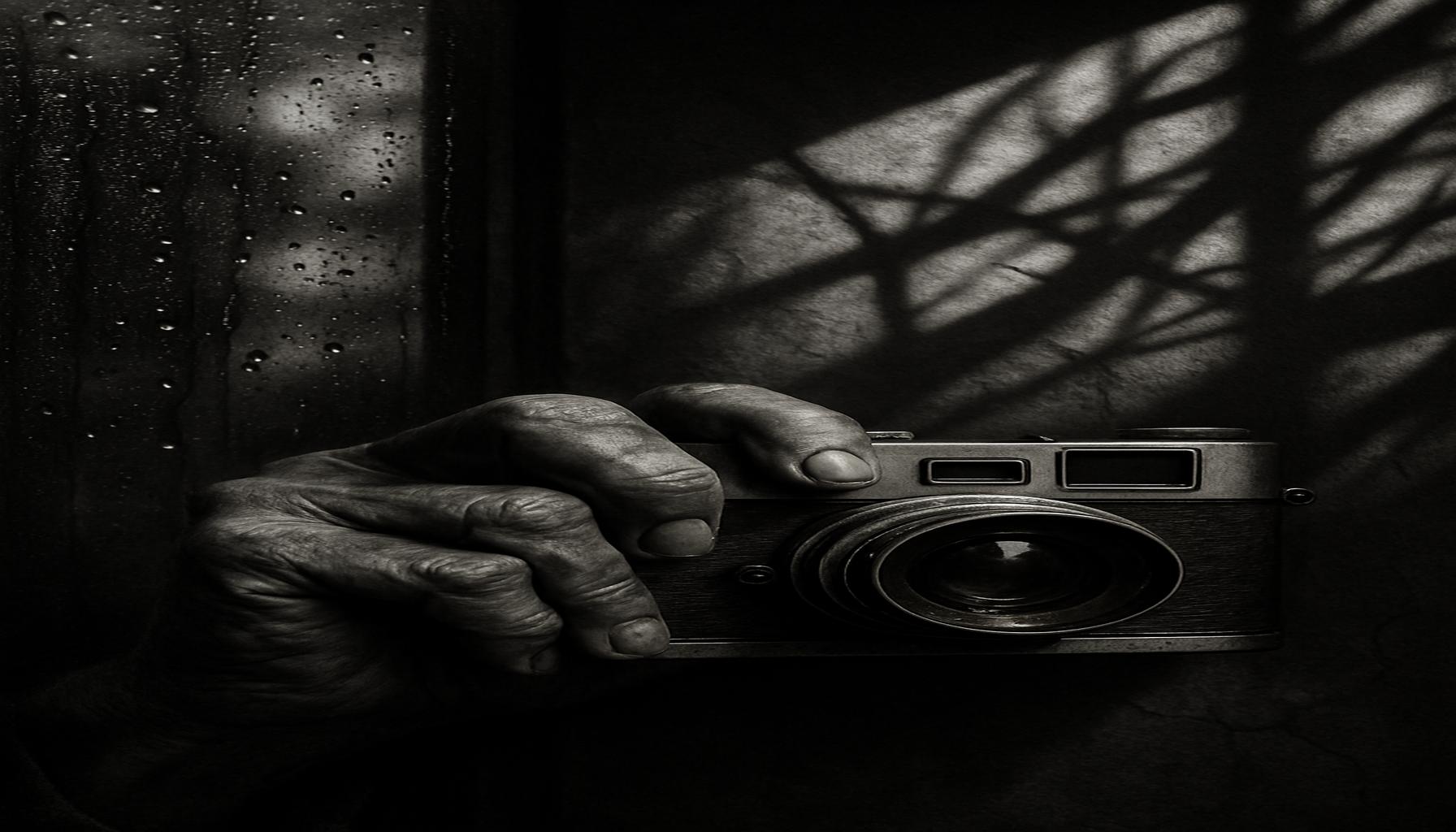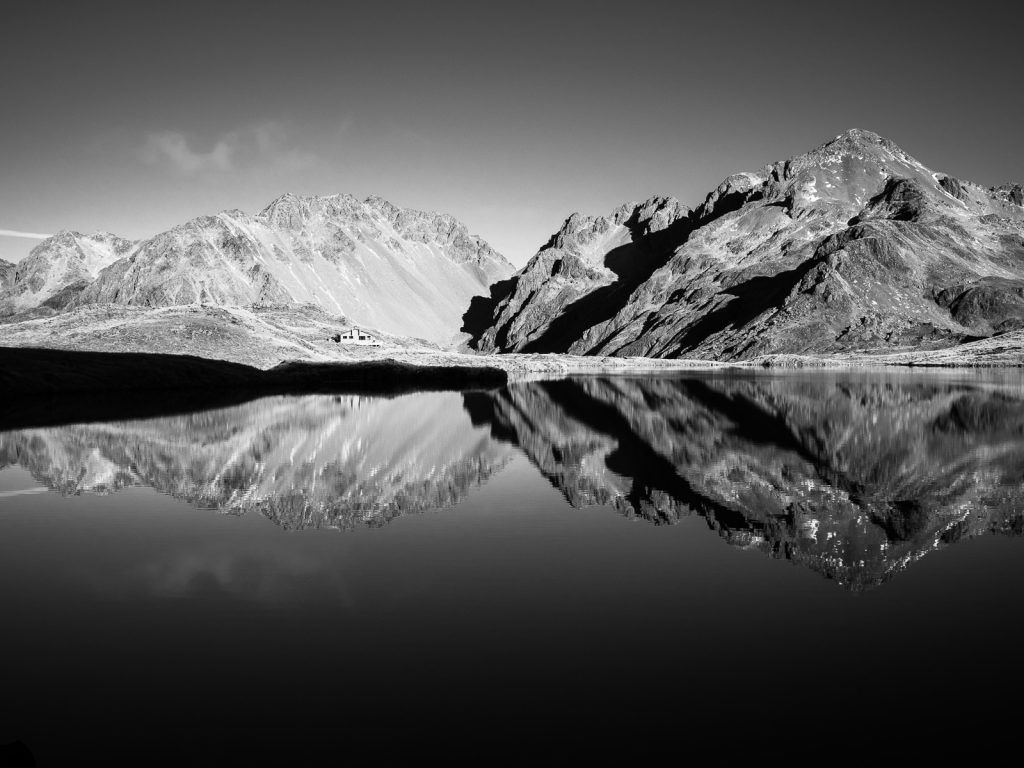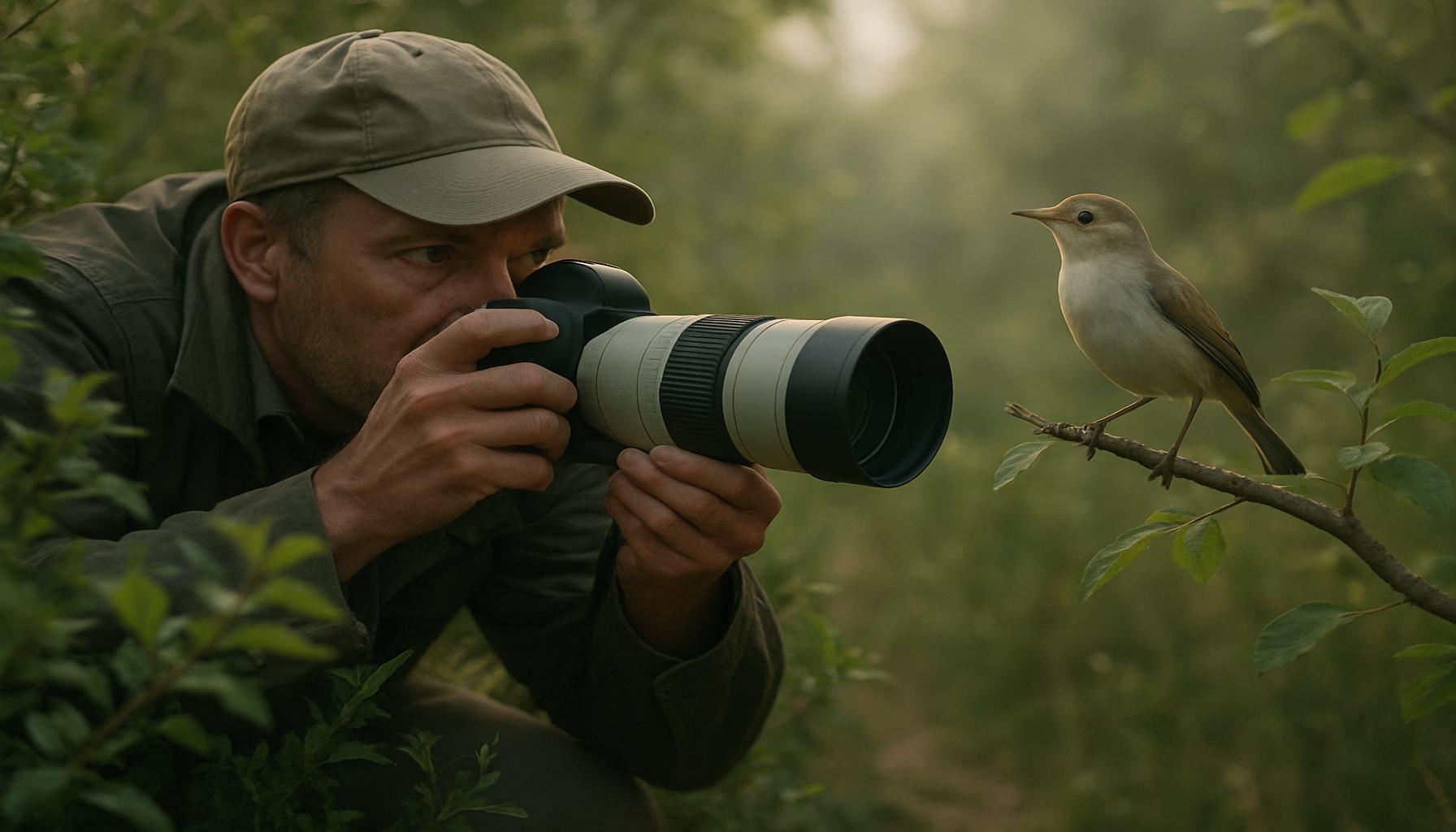The Aesthetics of Black and White Photography: Exploring Contrasts and Emotions

The Artistry of Black and White Photography
Black and white photography possesses a unique power that transcends the ordinary, pulling viewers into a realm where color is stripped away, revealing the essence of subjects. This timeless style is not just a creative choice; it serves as a window into the depths of human experience and emotion, allowing the observer to connect with the captured moment on a profound level.
By eliminating color, photographers harness the potential of light and shadow to create images that are rich in contrast. This interplay between dark and light creates dramatic visuals that can evoke a sense of nostalgia, melancholy, or even joy. For example, a stark image of a sun-drenched street can convey the warmth of a summer day, while a shadowy alley may invoke feelings of unease or mystery. The ability to manipulate these elements contributes to the photographer’s narrative, effectively telling stories that sometimes elude the vibrant hues of a color photograph.
Moreover, emotion plays a crucial role in black and white photography. Monochrome imagery can elicit deeper feelings, often resonating more intensely with viewers. The absence of color encourages a focus on the subject’s expressions and the mood of the scene, guiding the audience to contemplate the underlying emotions. Iconic images of exhausted laborers during the Great Depression, famously captured by Dorothea Lange, are prime examples of how black and white imagery compacts narratives of hardship and resilience in a single frame.
Another vital feature of this style is its ability to direct focus. Stripping away the distractions of color allows viewers to hone in on composition, lines, and textures that contribute to the overall impact of the photograph. A well-composed black and white image often leads the eye through intricate details, revealing layers of meaning that might not be immediately apparent. In portraits, for instance, the interplay of light on the subject’s skin can enhance the emotional depth, drawing viewers into a more intimate connection.
From the gritty streets of New York to the serene landscapes of the Midwest, black and white photography captures the nuances of life in powerful ways. Notable imagery from world-renowned photographers like Ansel Adams illustrates the majesty of nature in stark monochrome, capturing the grandiosity of landscapes while subtly highlighting the delicate interplay of environmental elements. His work invites audiences to appreciate not just the scenic beauty, but also the environmental themes that resonate within those landscapes.

As we delve deeper into the aesthetics and significance of this art form, we will explore its rich history, diverse techniques, and the profound emotional connections it fosters among its viewers. Join us on this captivating journey to discover what lies beyond the absence of color—a world alive with feelings, narratives, and artistry that await to be unveiled.
DISCOVER: Click here to unlock the therapeutic power of creative writing
The Depth of Contrast in Black and White Photography
At the heart of black and white photography lies the compelling quality of contrast. This visual element not only shapes the aesthetic appeal of an image but also serves as a critical amplifier for the underlying emotions. In this genre, the relationship between darkness and light plays a pivotal role, with every shadow and highlight orchestrated to elicit specific responses from the audience. Photographers meticulously control these elements, challenged by the nuances of light as it dances across surfaces and textures.
The starkness of black and white images offers a distinct narrative, enabling viewers to contemplate the emotional weight of the depicted moment. The high contrast found in black and white photography has the ability to evoke strong sentiments—creating images that resonate with feelings ranging from tension to tranquility. Here are some key aspects in which contrast enriches the visual storytelling of black and white photography:
- Emotional Evocation: The interplay of light and shadow can heighten the emotional undertones of a photograph. For instance, a well-timed portrait capturing strong lighting from one side can accentuate expressions, evoking feelings of joy or sorrow.
- Visual Hierarchy: Contrasts help establish a structured visual narrative, guiding the viewer’s gaze through the image. The distinction between dark and light elements creates a focal point, effectively leading the audience’s attention where the photographer intends.
- Textural Richness: Black and white photography amplifies the textures within a scene, revealing intricate details that often go unnoticed in color photographs. The graininess of a rustic wall or the smoothness of a facial feature can register as more immediate and poignant without the distraction of color.
Beyond the technical applications, the use of contrast serves as a vehicle for storytelling, providing layers of meaning connected to the themes of the image. For example, in the world of street photography, the sharp contrasts between light and shadow can symbolize the dichotomy of urban life—the bright optimism of daylight versus the threatening shadows of the night. A photograph capturing a lone figure standing under a stark streetlight amidst darkness can narrate tales of isolation or resilience, urging the viewer to reflect on their own experiences.
Moreover, the emotional resonance doesn’t just stem from the subjects themselves, but the context in which they are captured. Consider the powerful works from iconic American photographers like Robert Frank, whose images from “The Americans” series portray a raw, unfiltered view of mid-20th century American life. Frank’s use of contrast allows each photograph to convey profound social commentaries, addressing themes of alienation and connection amidst the backdrop of everyday life.
As we uncover more about the aesthetics of black and white photography, we delve not only into the technical mastery of contrasts but also into the emotional narratives that unfold through this evocative art form. The absence of color reveals a spectrum of feelings hidden beneath the surface, inviting viewers to venture deeper into the story that each image tells.
The Psychological Impact of Black and White Photography
Black and white photography possesses a unique ability to evoke profound emotions, often transcending the boundaries of color to highlight the intricate dance between light and shadow. The absence of color allows viewers to focus on the subject’s form and texture, enhancing feelings of nostalgia and introspection. This art form often captures human expressions in their rawest state, transforming ordinary moments into timeless memories. The contrast inherent in these images draws attention to the nuances within the frame, inviting the audience to interpret the emotions conveyed by the subjects.Moreover, monochrome imagery often carries cultural and historical significance, evoking a strong sense of melancholy or tranquility based on the composition and lighting. Photographers like Ansel Adams and Sebastião Salgado have harnessed this power, crafting striking landscapes and emotional portraits that challenge the viewer’s perception of reality. The deep blacks and bright whites often symbolize the duality of life—joy and sorrow, light and darkness—creating a compelling narrative that resonates on multiple levels.Furthermore, black and white photography serves as a medium for artistic expression and commentary. The stark contrasts can illustrate societal issues, creating a strong visual impact that prompts deeper reflection and discussion. Artists in this genre are able to manipulate light to create dramatic effects, turning mundane scenes into powerful statements. By embracing this aesthetic, viewers are encouraged to not just see the image but to feel its essence, making black and white photography a profound vehicle for emotional exploration.
Table of Advantages of Black and White Photography
| Advantage | Description |
|---|---|
| Focus on Emotion | Eliminates distraction from color, allowing raw emotions to shine. |
| Timeless Quality | Creates a sense of nostalgia, making images feel eternal and classic. |
| Simplicity and Clarity | Highlights shapes and textures, simplifying complex scenes into striking visuals. |
| Artistic Expression | Facilitates creative choices in exposure and composition to narrative depth. |
This artistic medium continues to captivate both photographers and audiences, encouraging exploration and deeper engagement with the fundamental emotions that define the human experience. The aesthetic choices and dramatic contrasts found in black and white photography remain timeless, inviting a renewed interest in those willing to delve into its emotional depths.
DISCOVER MORE: Click here to dive into the evolution of digital photography
The Emotional Landscape of Shadows and Light
As we delve deeper into the world of black and white photography, the interplay of shadows and light emerges as a profound aspect shaping the emotional landscape of images. In stark contrast to color photography, which can evoke reactions based on chromatic associations and cultural perceptions, black and white photography strips the canvas bare, inviting visceral emotional engagement through more primal aesthetic elements. The absence of color allows viewers to focus intently on **form**, **texture**, and **composition**, thus unveiling layers of meaning often obscured by hues.
The concept of light is particularly vital in this genre. When a photograph captures light, it serves not only as a fundamental visual element but as an emotional beacon. High key images, characterized by a prevalent lightness, often manifest feelings of peace and serenity, commonly seen in landscapes or soft portraits. Conversely, low key images delve into the darker realms of emotion, portraying a more somber or brooding ambiance. These nuanced attributes offer photographers an expansive canvas for expressing complex feelings, immersing the viewer in an emotional experience that transcends mere visual appreciation.
In exploring the emotional dimensions inherent in black and white photography, we can look to the works of contemporaries like Andreas Gursky and Diane Arbus. Gursky’s monumental works, often characterized by vast, sprawling landscapes captured in monochrome, portray haunting reflections of modernity and consumerism. On the other hand, Arbus’s portraits resonate with raw vulnerability, capturing subjects in intimate, revealing moments, accentuated by deep shadows that add layers of depth and sadness. Both photographers exemplify how black and white photography can evoke a contrasting array of emotions through the thoughtful manipulation of light.
- Interplay of Clarity and Ambiguity: The emotional richness of black and white photography also derives from its capacity to blur the boundaries between clarity and ambiguity. A photograph that merges sharp contrasts with softer shadows can provoke a sense of contemplation, inviting viewers to question the narrative behind the visual. This interplay encourages exploration of personal histories, reflections, and interpretations that transcend the immediate image.
- Symbolism in Simplicity: Black and white photography often distills subjects to their essence, using simplicity as a powerful tool of symbolism. For example, a solitary tree enveloped by an expansive white background can symbolize resilience and isolation, conveying poignant emotions that may not be as readily apparent in a color photograph filled with lively greens and earth tones.
- Invoking Nostalgia: Black and white images can evoke nostalgia, transporting viewers to different eras through their timeless quality. Many notable works from the mid-20th century, where the convergence of light and shadow evokes a sense of yearning or reflection on past times, resonate deeply due to their emotional grounding in history and memory.
Furthermore, the **textural quality** of black and white photography enhances its emotional landscape. The use of grain, whether intentional or a byproduct of the medium, adds a tactile sensation that connects the viewers to the photograph on a sensory level. A gritty portrayal of a weathered face, with visible skin textures and lines, tells a profound story of life experiences etched in time, rolling back the years and evoking empathy in the viewer.
The exploration of contrast does not end with aesthetics; it extends into the psychological and emotional realms, allowing a deep dive into the melodies of the human condition. The shadows and light in each photograph become characters in their own right, unveiling the intricacies of joy, pain, solitude, and connection. As we explore the aesthetics of black and white photography, we uncover a rich tapestry woven from emotional hues that reside beneath the surface of each image, waiting to be discovered.
DISCOVER MORE: Click here to learn about the evolution of digital art
Unveiling the Depths of Monochrome Narratives
In conclusion, the aesthetics of black and white photography serve as a profound gateway into the intricate interplay of contrasts and emotions. By stripping away colors, this art form magnifies the subtleties of light and shadow, inviting viewers into a world where every image is laden with emotional depth far beyond mere visual appeal. The capability to evoke nostalgia, provoke contemplation, and articulate vulnerability through monochromatic tones showcases not only the artistic rigor of photographers but also the innate capacity of such imagery to resonate deeply with the human experience.
The diverse lenses through which iconic photographers like Andreas Gursky and Diane Arbus capture their subjects reveal distinct emotional narratives embedded in textures and forms, encouraging audiences to engage not just with what is visible but with what lies beneath the surface. The juxtaposition of clarity and ambiguity in black and white images serves as an invitation to reflect on personal and shared histories, while their timelessness allows for connections across generations.
Ultimately, the aesthetics of black and white photography remind us that the absence of color can lead to a richer exploration of the human condition—where every shadow casts a story, and every beam of light illuminates our shared emotions. As we continue to engage with these striking visuals, we uncover not just the beauty of contrasts but the profound emotional truths that they reveal, urging us to explore, interpret, and feel with renewed perspective.


